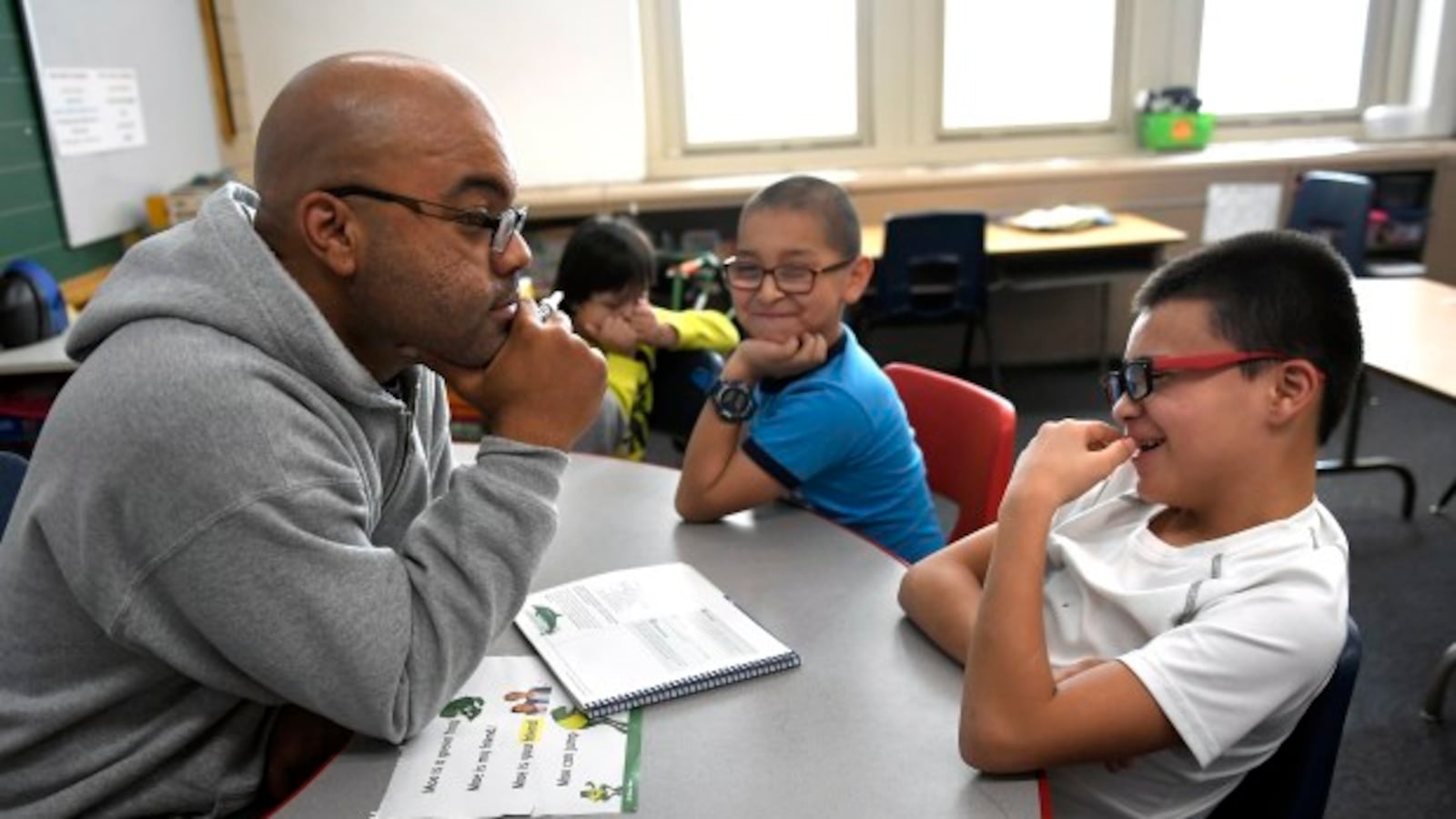Aya Saad-Masri grew up speaking English at home, but because she came from an immigrant family, white elementary teachers misinterpreted her stutter and placed her in English language development classes.
“I never had the chance to experience a supportive immigrant teacher until seventh grade,” Saad-Masri, a high school freshman, told lawmakers this week. “Finding out there are immigrant teachers out there is life-changing. For years, I thought I could never have an important career like teaching or helping people because I’d never seen anyone like me teach.”
State Rep. James Coleman, a Denver Democrat, recognizes that feeling. As a young student, Coleman bounced from school to school until he landed at one where his culture and heritage were recognized.
“I didn’t have the sense of pride in what it meant to be African American until I attended a school where I was taught African American history daily, run by an African American principal and taught by African American teachers,” he said.
Coleman wants to see the state’s educator workforce better reflect its students. With state Rep. Bri Buentello, a Pueblo Democrat and teacher, he’s sponsoring a bill that he hopes will shed more light on the barriers faced by teachers of color and lead to changes. The bill passed the House Education Committee unanimously on Tuesday.
Statewide, almost half of Colorado students are students of color, but 87% of teachers are white, according to the Colorado Department of Education. Of the state’s 178 school districts, 130 don’t have a single black educator, and a third do not have a single Hispanic educator.
This has consequences for students and teachers. One study found that having just one black teacher by third grade greatly increased the chances that a black student would go to college. And Ashley Hazelwood, senior program manager at Teach Colorado, said the isolation felt by black and Hispanic teachers who are an “only” in their school is one factor that causes them to leave the profession at higher rates than their white peers.
The bill, Diverse Kindergarten Through 12th Grade Educator Workforce Report, has two components. It convenes a work group to examine barriers to hiring and retaining teachers of color, including barriers to licensure. That group will report back to the legislature by September 2021 with recommendations. And it requires the Colorado Department of Higher Education to report not just how their graduates do on licensure exams, but to break the data down by race, ethnicity, and gender. It also requires the department to make that information available online.
Buentello called this a “critical first step” in creating a more diverse teacher workforce.
“Our students deserve the best educators, and those aspiring to be educators deserve to be set up for success,” Coleman said.
Nationally, 75% of white teacher candidates eventually pass their licensing exams, compared to just 38% of black teacher candidates and 57% of Hispanic teacher candidates, according to a report from the National Council on Teacher Quality, a group that advocates for more rigorous teacher training. This happens even though black and Hispanic teacher candidates have graduated from college and completed student teaching, and the reasons are complex.
“When it is time to finish the last hurdle, they’re tripped up,” said Prateek Dutta of Democrats for Education Reform, one of a number of advocacy groups that support the bill.
The hope is that by making information on pass rates easily accessible, students can make informed choices about which educator preparation program to pursue, and institutions will be motivated to better prepare students.
Stephanie Perez-Carrillo said having access to this information would have been valuable for her. She left teaching after her first year, despite good results in the classroom and a strong rapport with her students, after failing the test for a secondary math credential seven times. She had been one of just three Hispanic teachers in her school and the only one who spoke Spanish.
“It was heartbreaking,” she said. “I thought I had failed myself and failed my students.”
Elizabeth Hinde, dean of the College of Education at Metro State University, the state’s second largest teacher prep program, said students of color face numerous barriers. She told stories of students who had to leave their programs to pay medical bills or support family members, and spoke of a black male teacher with a credential in special education, a shortage area, who could not get a job despite interviews at many schools until he went directly to one district’s human resources department.
When teacher pay went up in the Denver school district after last year’s strike, the district hired more white teachers than in recent years, despite an explicit goal of hiring more diverse educators. More experienced educators — who were also more likely to be white — applied, and principals in turn hired more of them.
The working group’s findings, which will build on a report done in 2014, could spur additional policy changes. Coleman had originally planned to include some sort of fee waiver program so that more candidates could afford to take licensure exams, but that didn’t make it into the final bill. Coleman said he believes policymakers already know enough to make some changes to help diversify the state’s teachers, but those recommendations will have more heft coming from a group of experts.
The bill still needs to pass the full House and the Senate before going to the governor’s desk.

